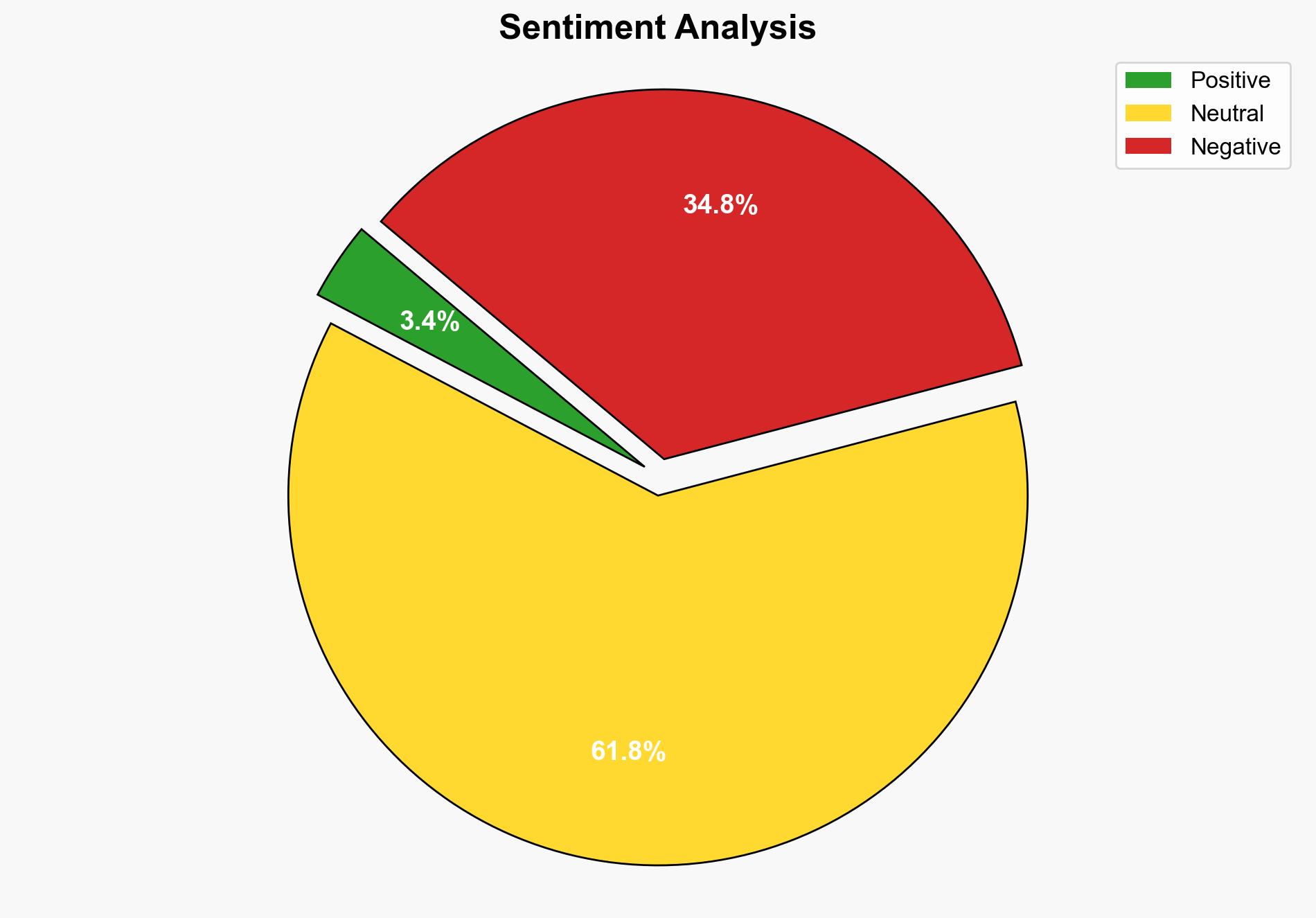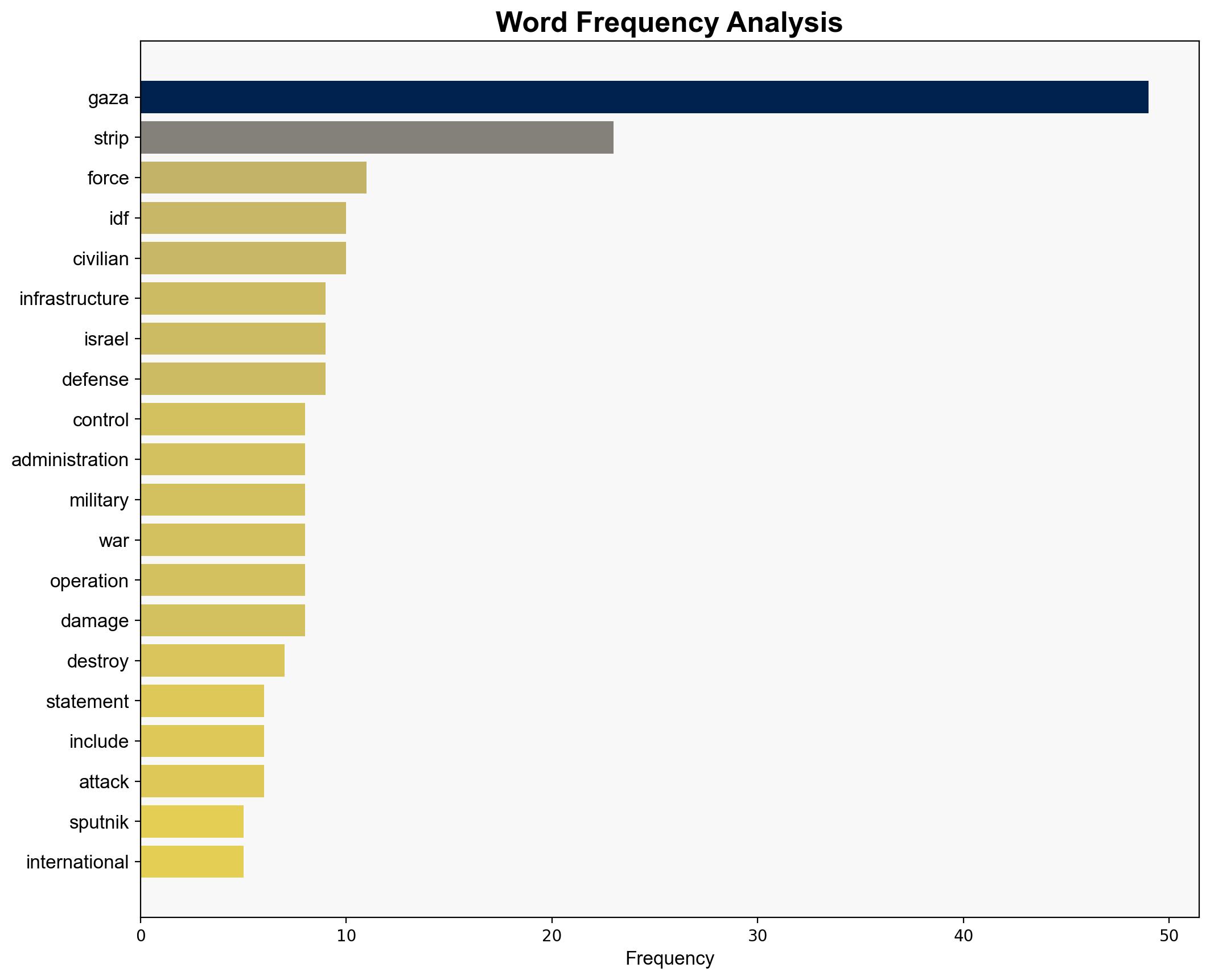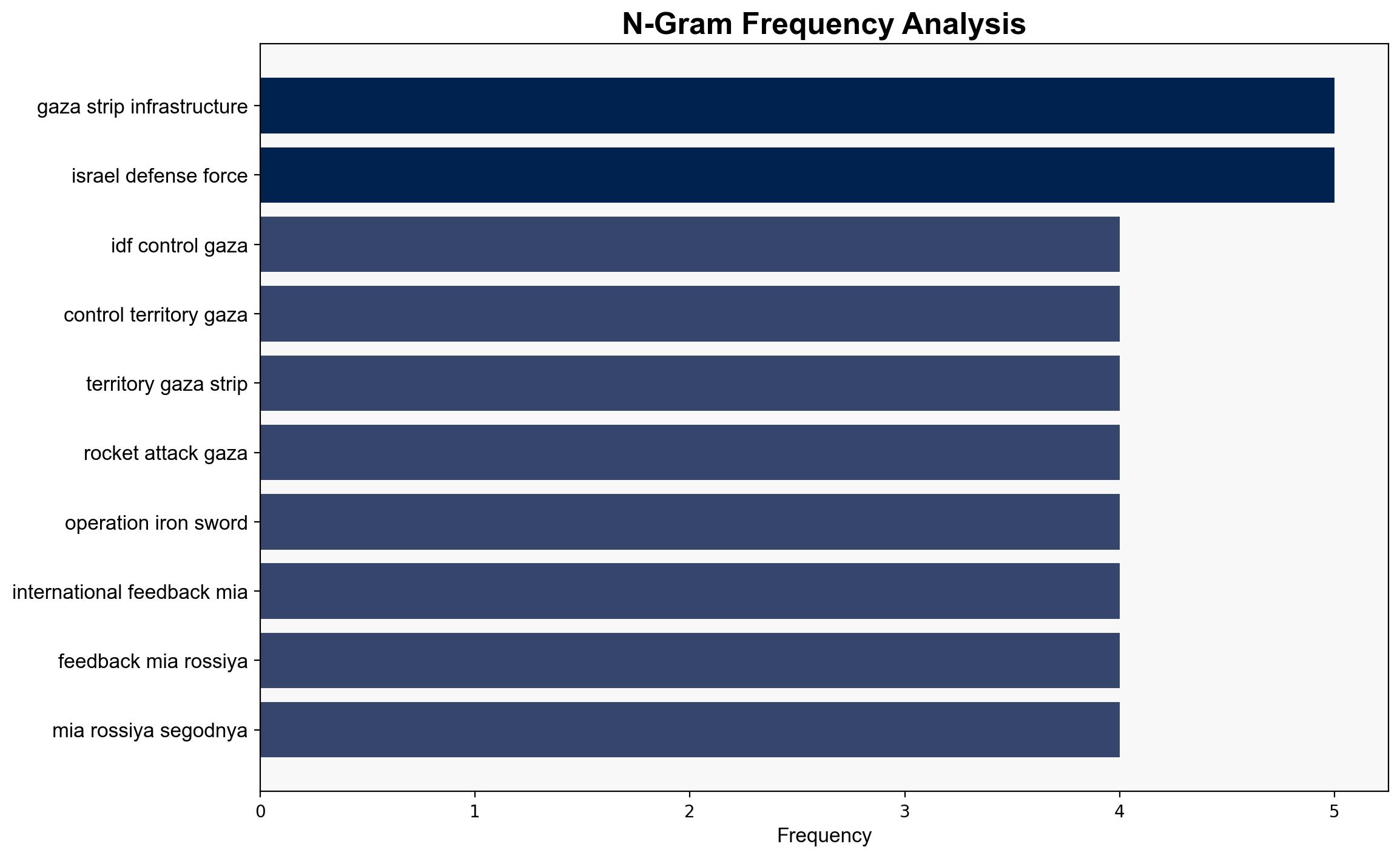IDF Controls Over 80 of Gaza Strip 90 of Infrastructure Destroyed – Sputnikglobe.com
Published on: 2025-09-06
Intelligence Report: IDF Controls Over 80 of Gaza Strip 90 of Infrastructure Destroyed – Sputnikglobe.com
1. BLUF (Bottom Line Up Front)
The Israeli Defense Forces (IDF) reportedly control over 80% of the Gaza Strip, with significant destruction of infrastructure. The most supported hypothesis is that the IDF’s actions are a strategic military response to recent escalations by Hamas, aiming to neutralize threats and dismantle infrastructure used by militants. Confidence in this hypothesis is moderate due to potential biases in reporting and lack of independent verification. Recommended action includes increased intelligence gathering to verify claims and assess humanitarian impacts.
2. Competing Hypotheses
1. **Hypothesis A**: The IDF’s control and destruction of infrastructure in Gaza are primarily defensive measures in response to Hamas’s recent attacks, intended to prevent further incursions and rocket attacks.
2. **Hypothesis B**: The IDF’s actions are part of a broader strategic objective to weaken Hamas’s operational capabilities and influence in Gaza, potentially as a precursor to a more permanent change in the region’s governance.
Using ACH 2.0, Hypothesis A is better supported by the immediate context of recent hostilities and the IDF’s stated objectives. Hypothesis B, while plausible, lacks direct evidence of long-term strategic planning beyond current military objectives.
3. Key Assumptions and Red Flags
– **Assumptions**: Both hypotheses assume the IDF’s actions are primarily motivated by security concerns. There is an implicit assumption that infrastructure destruction is collateral rather than a primary objective.
– **Red Flags**: The source’s potential bias, given its origin, raises concerns about the accuracy of reported figures and the extent of destruction. The lack of independent verification is a significant blind spot.
– **Inconsistent Data**: Discrepancies in casualty figures and damage assessments across different reports suggest possible misinformation or propaganda.
4. Implications and Strategic Risks
– **Escalation Risks**: Continued military operations could lead to further regional instability, drawing in neighboring countries or non-state actors.
– **Humanitarian Impact**: Extensive infrastructure destruction could exacerbate humanitarian crises, leading to increased displacement and international condemnation.
– **Geopolitical Consequences**: The situation might strain Israel’s diplomatic relations, particularly with countries sympathetic to the Palestinian cause.
5. Recommendations and Outlook
- Enhance intelligence collection efforts to verify on-ground realities and assess the humanitarian situation.
- Engage in diplomatic dialogues to de-escalate tensions and explore ceasefire possibilities.
- Scenario Projections:
- **Best Case**: Ceasefire achieved, humanitarian aid allowed, and infrastructure rebuilding begins.
- **Worst Case**: Full-scale conflict escalates, drawing in regional actors and leading to significant civilian casualties.
- **Most Likely**: Continued skirmishes with intermittent ceasefires, prolonged humanitarian challenges.
6. Key Individuals and Entities
– **IDF**: Central to military operations in Gaza.
– **Hamas**: Primary adversary in the conflict, responsible for recent attacks on Israel.
7. Thematic Tags
national security threats, counter-terrorism, regional focus, humanitarian crisis





